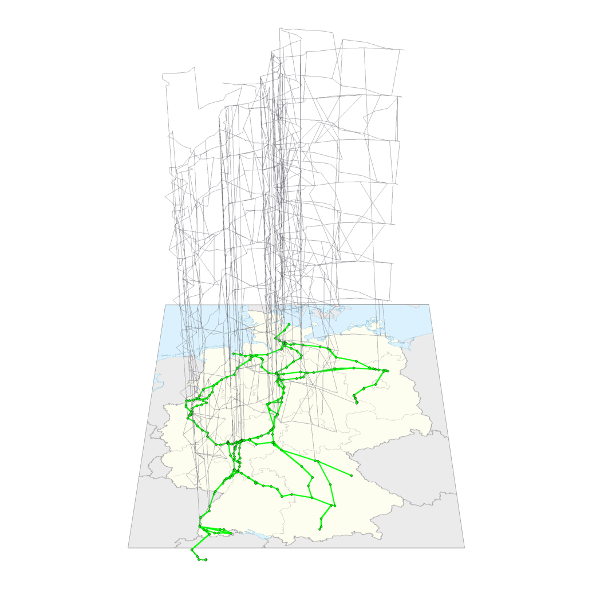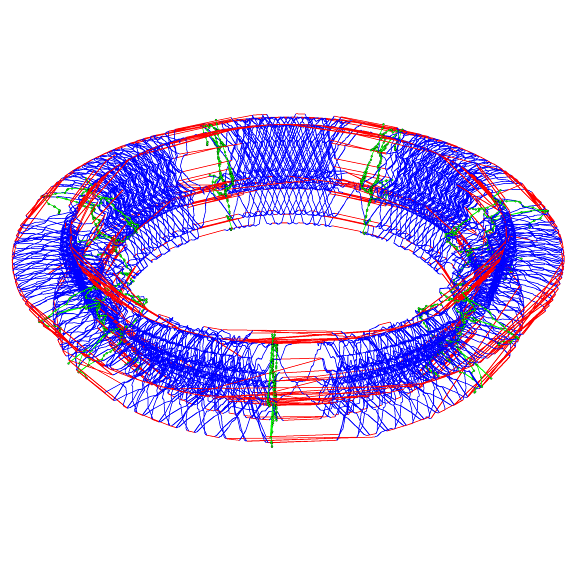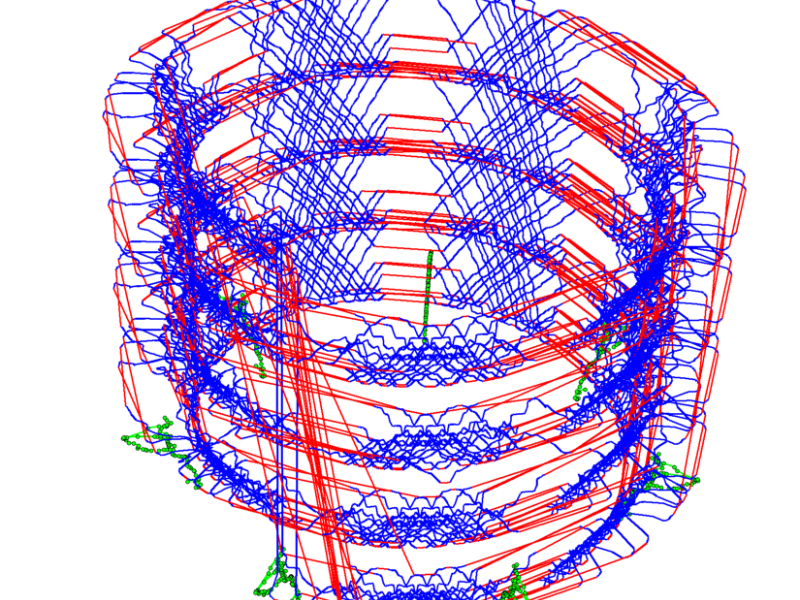The vision of MODAL's RailLab is to increase the attractivity and competitiveness of rail-bound traffic by developing powerful novel mathematical optimization methods in order to support the planning processes of railways. The core problem is the efficient use of the rolling stock. The RailLab focusses on long distance passenger traffic and, in particular, the use of high-speed railcars. The following research topics are investigated: • fully dated vehicle rotation planning in order to roll out a given cyclic rotation plan onto a concrete calendar period including seasonal changes, holidays, construction sites etc (phase I) • robust vehicle rotation planning in order to enhance the stability of the plan w.r.t. disruptions (phase II) • service oriented vehicle rotation planning in order to use the "the right train on the right relation" (phase III).
RailLab is a cooperation of ZIB, DB Fernverkehr AG, and LBW Optimization GmbH to develop novel optimization algorithms for vehicle rotation planning in order to automate and improve planning processes in railway operations.
Germany has the largest railway network in Europe, containing roughly 33,500 km of tracks and 5,400 stations. Every day, 27,000 long and short distance passenger trains transporting 5.5 million passengers and 5,000 cargo run on this network. This system is highly relevant for society, industry, and the environment. Its maintenance and operation is expensive, infrastructure construction is extremely long termed. Putting the available network capacity to the best possible use is therefore of utmost importance for increasing the attractivity and competitiveness of rail-bound traffic not only in Germany.


Strategic planning of ICE train rotations: Hypergraph visualization tool HyDraw of Ricardo Euler and Gerwin Gamrath based on JavaView of Konrad Polthier. In strategic train rotation planning rotation cycles for so-called standard weeks are designed in order to determine the number of trains needed for the future timetable.
Many planning processes in the railway industry are still operated in a manual way, the use of mathematical optimization technology is rare. The reason for this is the high complexity of railway operations respectively the lack of performance of the existing algorithms, which until recently thwarted all attempts to mathematical railway optimization.

Visualization of a 2016 ICE timetable. Analyzing timetables is a common task for rotation planners. This image shows the result of an automated timetable analysis tool, which has been developed in the MODAL-RailLab. The tool is already being used by practitioners and helps to make planning more efficient.
RailLab is based on the results of two forerunner projects Vehicle Rotation Planning for Long Distance Passenger Railways (DB-ROTOR) and Multi-day Cyclic Rotations for Trains (VS-RAIL). These projects developed vehicle rotation optimizers ROTOR and VS-RAIL, respectively, which allow, for the first time, to solve strategic vehicle rotation planning problems for large-scale passenger railways such as the German ICE network. At present, rotation plans for a cyclic standard week can be optimized, aiming at the most efficient use of rolling stock, taking into account maintenance and other treatments of vehicles in facilities of limited capacities as well as operational regularity requirements on the similar use of vehicles on every day of the week. It is also possible to re-optimize a given rotation in order to adapt it to a changed scenario that results, e.g., from construction sites or seasonal changes of the timetable. Such a re-optimization is supposed to preserve the original schedule, as long as this is possible and not too expensive. In this way, scheduled maintenance services and deadhead trips do not have to be planned again, there is no need to apply again for resources like track capacity, and it is easier to adapt the duty schedule in the succeeding planning step.
Now that the principle feasibility of vehicle rotation planning is proved for a significant problem with a role model character for the entire planning chain, further and more complex applications in rolling stocking planning have come within reach. RailLab investigates the following planning problems:
- fully dated vehicle rotation planning (phase I)
- robust vehicle rotation planning (phase II)
- service oriented vehicle rotation planning (phase III).
This long-term program will be carried out in three phases of 4-5 years each. In addition to basic mathematical research, the projects include software development work packages of specification, collection and analysis of data, system analysis, modelling, algorithmic development, implementation, tests, system integration, dissemination, and the transfer of results to further applications.
